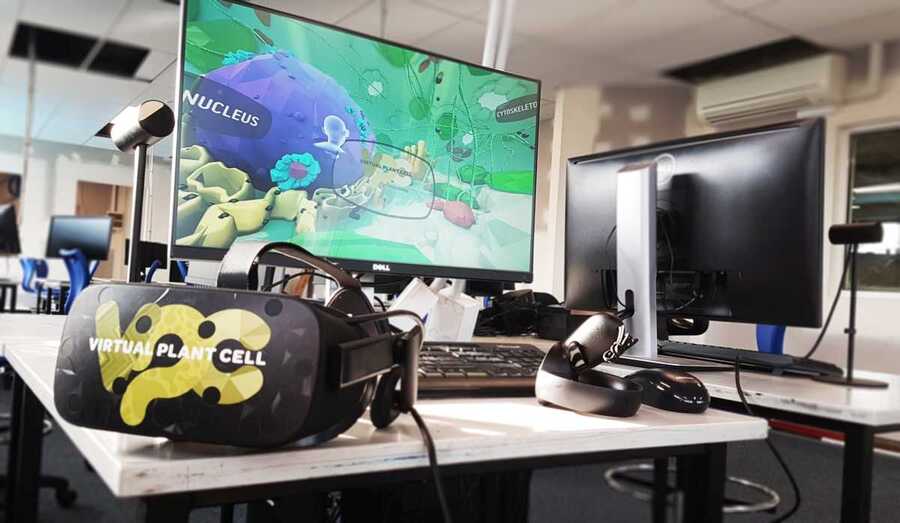This ground-breaking activity will see educational virtual reality (VR) being used to teach high school science.
Classroom VPC will be run on high-end VR headsets, called Oculus Rifts, allowing a whole class of students to explore the microscopic inner world of a plant in an immersive way. Students can interact with the cell and learn about complex processes.
The pilot program will help to determine if VR is useful in helping students learn science.
“We want to see if VR can improve students’ understanding of plant cells” said Karina Price, from PEB and the University of Western Australia, who has led the project.
Students often have difficulty learning the structure and function of plant cells as their size means they can’t be directly observed. By providing an immersive visual, auditory and spatial learning environment, VR allows for experiential learning inside of “worlds” that can’t be viewed in reality.
With VPC, a student can move across the inside surface of a plant cell membrane, help a chloroplast to photosynthesise, and can watch as DNA moves around them in the nucleus.
“We’re capitalising on the novelty and immersion of VR to enhance learning experiences.”
“We believe that educational virtual reality being used at this sort of scale in a classroom setting, is an unprecedented move.”
The Virtual Plant Cell is PEB’s custom-built suite of educational VR experiences. While it has been viewed by tens of thousands of members of the public, this is the first step in introducing VPC into Australian schools.
The project is pioneering the use of VR technology for comprehensive, curriculum-aligned education.
“With VPC, we want to capitalise on new technology to make learning science exciting, engaging and effective. It is a truly modern way to engage the next generation of students in science.”
Classroom VPC is being developed with the help of Western Australian artist Peter Ryan and Unity Developers Richard England and Józef Pierlejewski of Reflex Arc.
360 degree videos of the Virtual Plant Cell can be viewed on the Plant Energy Biology YouTube channel.

